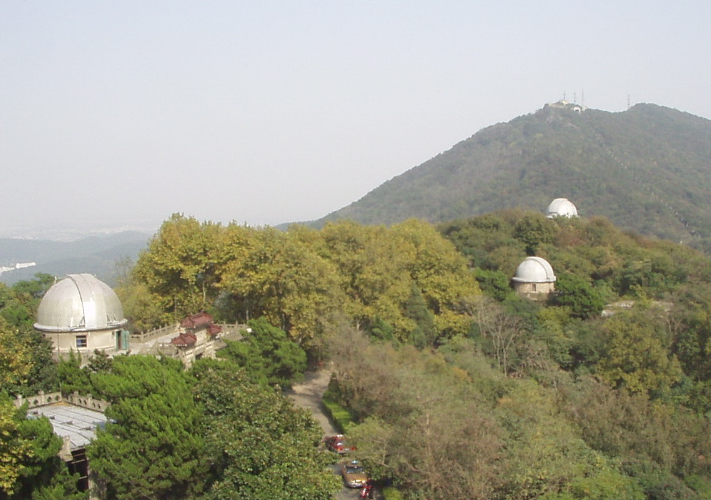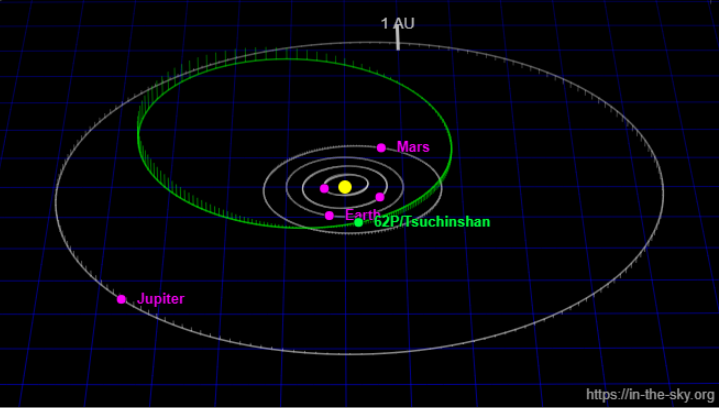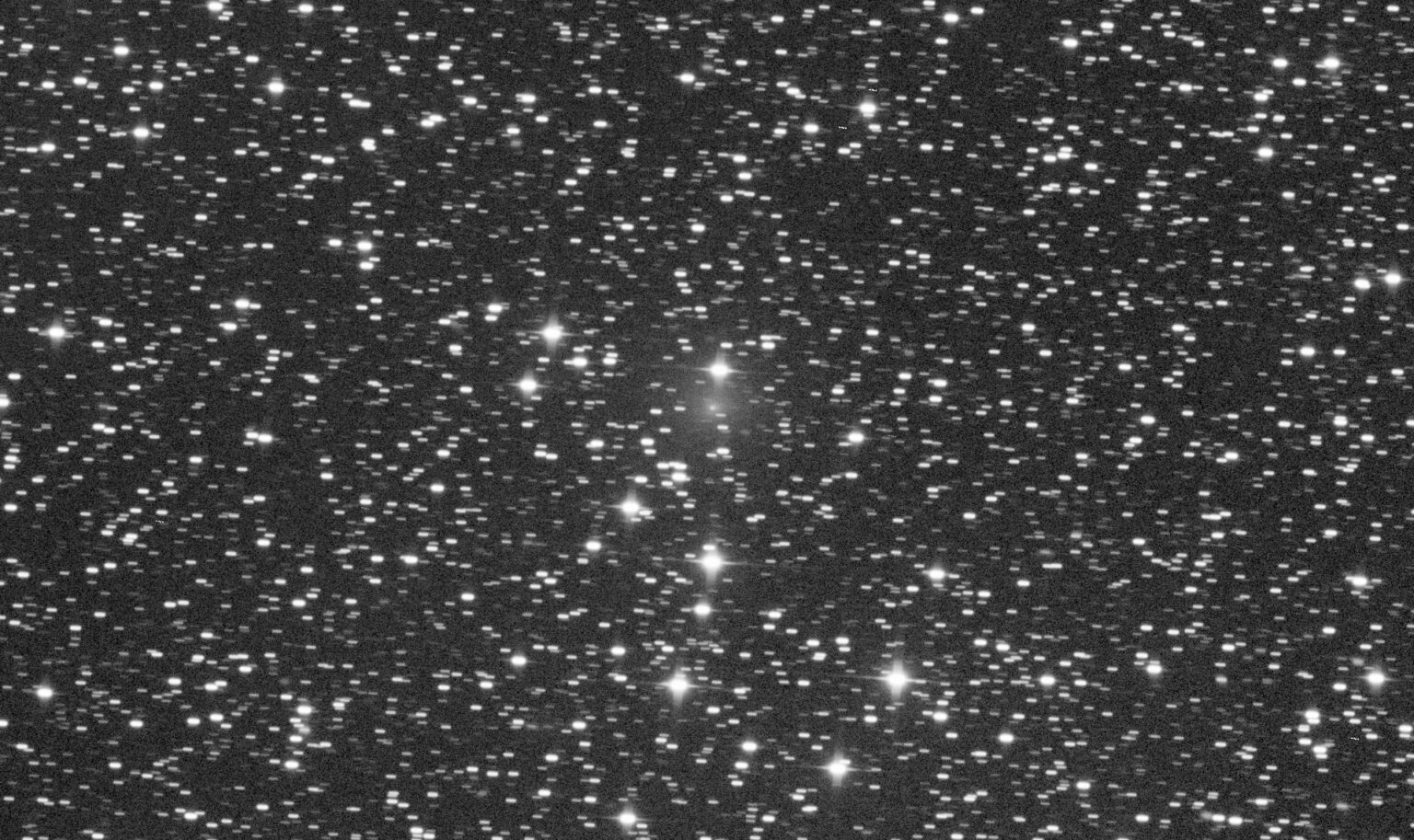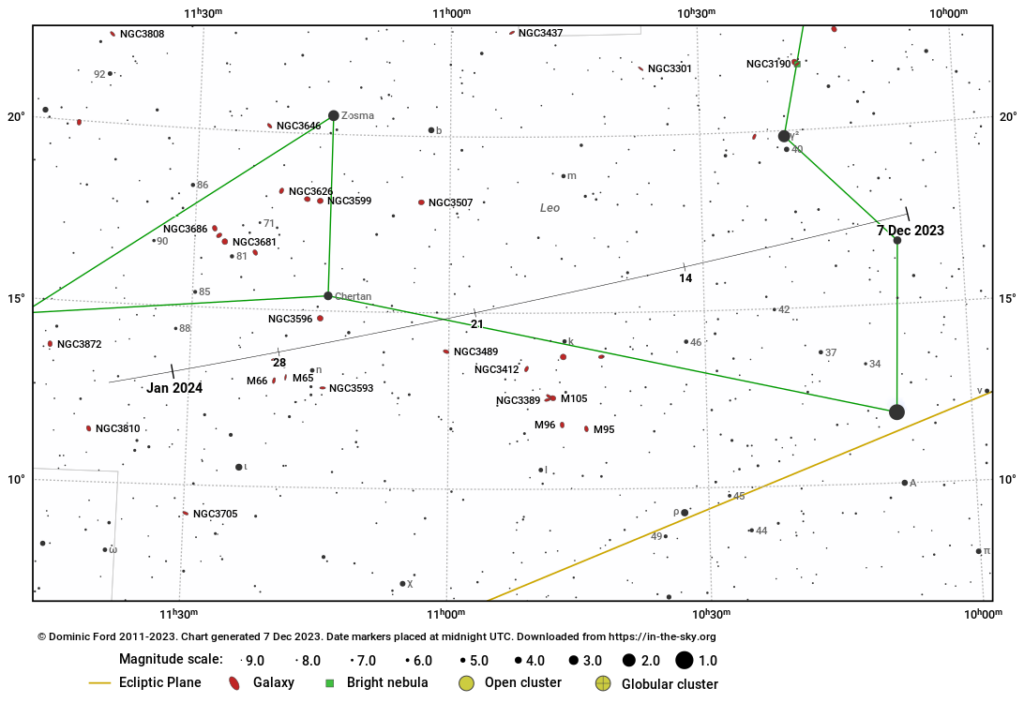The year 2023 has turned out to be rich in “tailed stars” that can be seen through small amateur telescopes. However, sometimes we had to wake up before dawn and look for a faint, misty speck low above the horizon. Even short-period comets, which are usually too weak for such instruments, showed their best side this year. The comet Tsuchinshan-1 will be like this and will pass perihelion on Christmas Day. On December 4, the Moon was in the sky not far from it, but in the following days it will move away, gradually reducing the phase, and will cease to interfere with observations.
Since the beginning of the 19th century, the tradition has developed to name comets after those who first found them and notified the relevant organization. Exceptions were made for objects that were repeatedly discovered in the past but were not identified as periodic — they were named after those astronomers who, in fact, managed to prove it. There are actually a few such examples, the most famous of them are Halley’s and Encke’s comets.

The Chinese broke the tradition. In early January 1965, the staff of the Purple Mountain Observatory (in Chinese, this name sounds like “Zijinshan”) discovered two comets within an interval of 10 days, which had not been noticed by anyone in the world until that moment. Since collectivism was encouraged in Maoist China at that time, no names of a particular astronomer were indicated in the reports — it was claimed that the entire staff of the observatory was involved in the discovery, therefore it should be memorialized in the name. After some hesitation, the Central Bureau of Astronomical Telegrams, which was then responsible for registering newly discovered bodies in the Solar System, announced two new objects — Tsuchinshan-1 and Tsuchinshan-2. In the catalog of short-period comets compiled later, they received numbers “in reverse order”: the first is 62P/Tsuchinshan, the second is 60P/Tsuchinshan.

Shortly after its discovery, on January 28, 1965, comet Tsuchinshan-1 passed perihelion at a distance of 1,486 AU (222 million km) from the Sun. In subsequent appearances, as a result of the evolution of the cometary orbit under the influence of Jupiter’s gravity, this distance gradually decreased, and the “tailed star” was able to fly quite close to the Earth. Such a flight at a distance of 0.497 AU (74 million km) will eventually take place on January 29, 2024. And on December 25, 2023, the comet will once again be in perihelion and will approach our luminary by 1,265 AU. In the interval between these two dates, it will move along the constellations Leo and Virgo against the background of a well-known galactic cluster, and its brilliance may reach the 8th magnitude — that is, it will be the brightest appearance in history.

Throughout December and January, it is better to observe the comet in the second half of the night. At the end of the year, it will culminate at about 5 a.m., its maximum height above the horizon at the latitude of Kyiv will be 52° and will decrease slightly during the early months of 2024. The “tailed star” will enter opposition to the Sun on March 24, and its brilliance at this time will drop to the 11th magnitude.

The next appearance of comet Tsuchinshan-1 in 2030 will no longer be so convenient for observations. A relatively close approach to it will have to wait until January 2088, when it will pass 0.41 au from Earth. By this time, it will have time to fly very close to Mars twice, and on April 1, 2049, it will approach it at a distance of 0.016 AU (2.4 million km), which is only six times the average radius of the lunar orbit. Perhaps future Martian colonists will witness a rare celestial spectacle!
Follow us on Twitter to get the most interesting space news in time
https://twitter.com/ust_magazine


